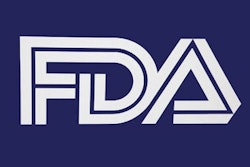Their findings suggest that women diagnosed with breast cancer on DBT studies could undergo less-invasive treatment and enjoy better outcomes, wrote the team led by Dr. Maryam Etesami.
Etesami and colleagues analyzed 15,768 digital mammograms acquired between August 2008 and August 2011 and 28,282 DBT exams acquired between August 2011 and August 2016. The researchers compared the cancer detection rates of the two modalities, as well as the type and size of cancers found and the axillary node status of cancers identified. They confirmed the results with histological data gleaned from biopsies.
DBT's cancer detection rate was 5.41 cancers per 1,000 patients screened; digital mammography's rate was 4.95 cancers per 1,000 patients -- a result that was not statistically significant. In addition, the researchers found no significant difference in the number of in situ and invasive cancers detected (67% with DBT and 70% with digital mammography).
However, the cancers DBT found were significantly smaller than those found on mammography, at 1.5 cm compared with 2.3 cm, the group noted.
"DBT screening may improve breast cancer early detection compared to digital mammography, which may lead to less systemic treatment and improved clinical outcomes," Etesami and colleagues concluded.



















